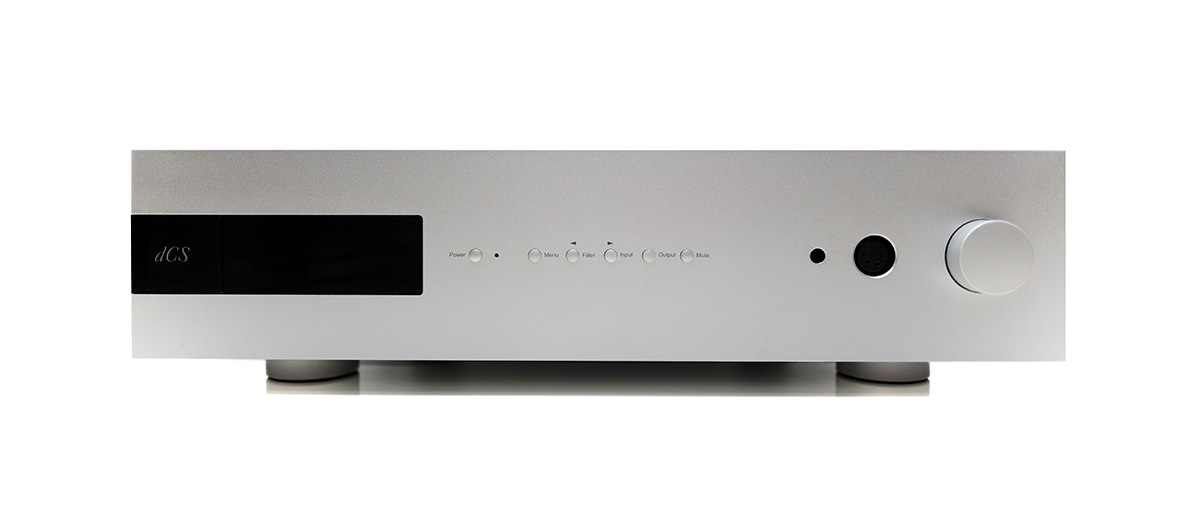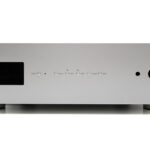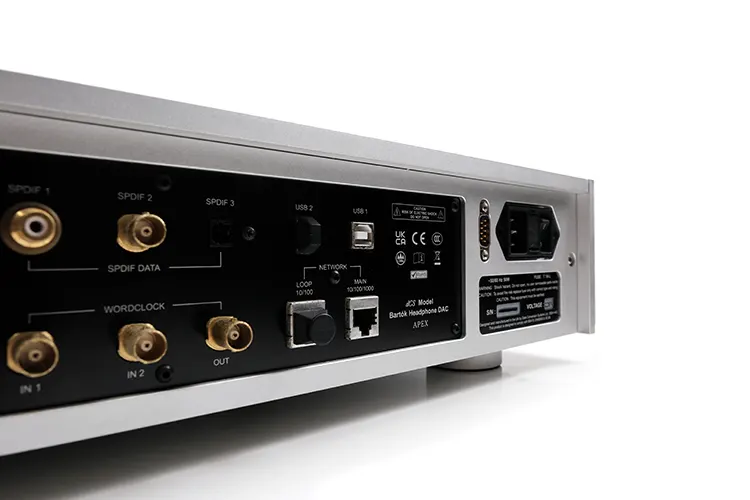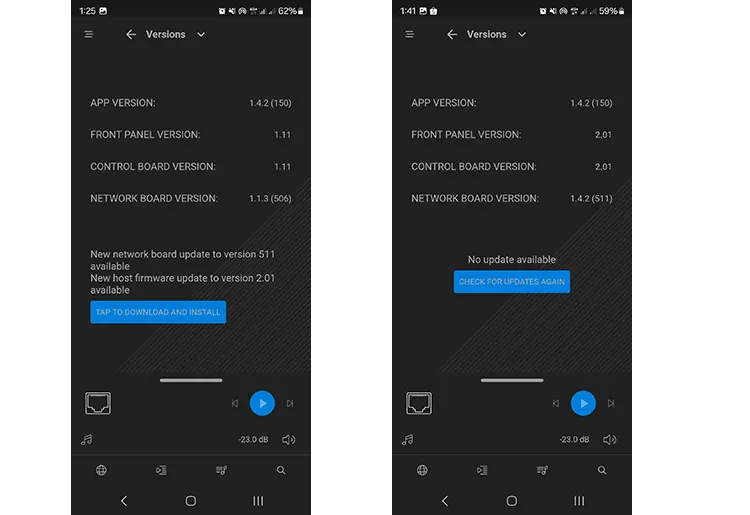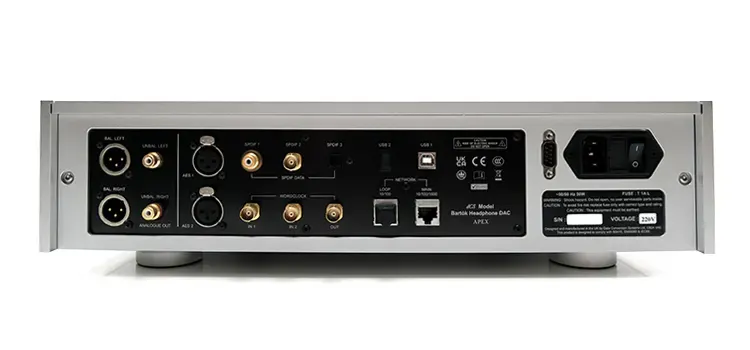In this feature, Marcus reviews the dCS Bartók APEX, which is a hardware-upgraded version of the original DAC/headphone amplifier focusing on further improving its audible performance.
It is priced at $20,950 for the standalone DAC and $22,950 including the headphone amplifier. Existing Bartók 2.0 units can be upgraded for $9000.
Disclaimer: The dCS Bartók APEX upgrade sent to us was purchased by myself and self-installed. You can read up on dCS and what they do in more detail via their main website.
To learn more about dCS products we have previously reviewed on Headfonics you can click here.
Note, that this article follows our latest scoring guidelines which you can read up on here.
I reviewed the original dCS Bartók back in mid-2020 and since then I have put hundreds of hours if not more on this device for listening and work purposes.
If not for the dCS Lina Clock, DAC, and amplifier stack launched in 2022, I would place this as one of the top integrated DAC and headphone amplifiers everyone should try before declaring any endgame headphone system setup.
However, dCS has not stood still on the Bartok despite the launch of the Lina. In 2022, the company launched the Bartok 2.0 which introduced the Vivaldi 2.0 and Rossini 2.0 dCS mappers, DSD128 (DSD X2) upsampling, and an additional DSD filter for noise control.
Roll on late 2023, and what initially did not seem likely is now a reality with this, the new APEX upgrade. I say initially because it was rolled out for the higher-end Rossini and Vivaldi units with no plans for the Bartok at the start of 2023. But things change quickly.
This is not just a software update but also a hardware update and an expensive one at that but with promises of audible improvement throughout. I can say, after a few weeks of testing the Bartok APEX that it does sound much more refined than what I am used to hearing previously.
How did they do it and what has changed to reach that conclusion can be read in further detail in the full review below.
What is the dCS Bartok APEX?
For a high-level overview to people who are reading about dCS and the Bartok for the first time you can consider this an ‘all-in-one’ component by modern HiFi and desktop audio standards.
The Bartok APEX will receive and decode digital audio through several protocols including USB, SPDIF, and ethernet, (streaming), using an in-house 5-bit thermometer-coded DAC with oversampling called the Ring DAC.
It then outputs the resulting analog signal via Class A amplification directly to headphones or via a line-out and pre-amp function to various power amps and speaker setups.
It is not just a physical component either. It has an integrated soft service via the Android and iOS-compatible dCS Mosaic app. This allows for comprehensive remote control of the unit, and OTA updates, as well as efficiently channeling the varied streaming options, 3rd party or otherwise.
The dCS Bartok APEX is a hardware-upgraded version with some secondary software revisions to accommodate the new hardware. It supersedes the older Bartok 2.0 from 2022 and is now the de facto standard when you go to buy a Bartok.
How Do You Upgrade Your Current Bartok?
The answer to this question is very simple. After paying for the Bartok upgrade you send the unit to dCS or their nearest dealer with support services. They will then install the upgraded component for you as well as ensure all software that interfaces with the APEX PC board is updated.
Once done, the dealer will send your shiny upgraded Bartok APEX back to you via a secure courier service.
When you do receive it just double check all software and current firmware are up to date which is easy to do via the dCS Mosaic OTA update service on iOS or Android.
From there dCS advises new owners to run the Bartok APEX for up to 100 hours to allow the new components to reach optimal operation parameters.
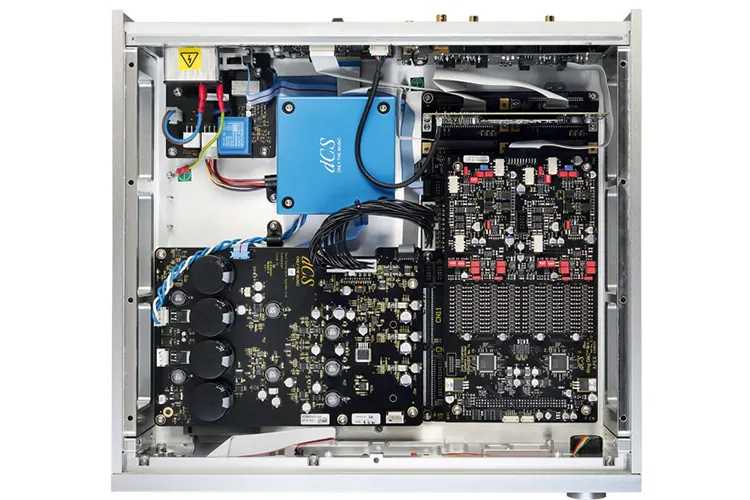
What Has Changed?
There are three key areas that dCS focused on with the Bartok APEX and I guess APEX in general since it is applied to their higher-end units also. Those key areas include the reference voltage, the clocking signal path, and the analog output circuitry.
You are likely reading multiple reviews and not just ours so you will see some reference to each of these in different terms such as power, impedance levels, and the noise floor to name but a few.
In short, the Ring DAC has been given a makeover with a lot of improvements but the most critical one I want to start with is sound, or more specifically the work done by dCS on reducing 3rd-order harmonic distortion from the Bartok APEX output.
3rd-order harmonic Reduction
In simple terms, 3rd-order harmonics is a coloration of the sound that is usually interpreted as giving the tonal balance of the note an edgier quality. It is more prevalent in resistor-based amplifiers compared to SETA or OTL amplifiers that focus on easier-on-the-ear even harmonics.
Whilst 3rd-order harmonics is an essential part of sound, and some do prefer that contrast and aggression in their audio, too much of it can upset the overall harmonic balance creating dissonance and a generally rawer unsettling listening experience.
With APEX, dCS has reduced 3rd-order harmonic distortion by 12dB over the original’s already competitive -120 dB rating. That is a significant reduction and one we will talk about in terms of the unit’s audible performance on page 2 of this review.
This improvement is largely down to a rework of the analog output circuitry with a new technique used for the transistors, (compound pairs instead of individual units), and the component layout being re-examined to ensure crosstalk between the components was minimized. That also means the noise floor is also lower with the Bartok APEX.
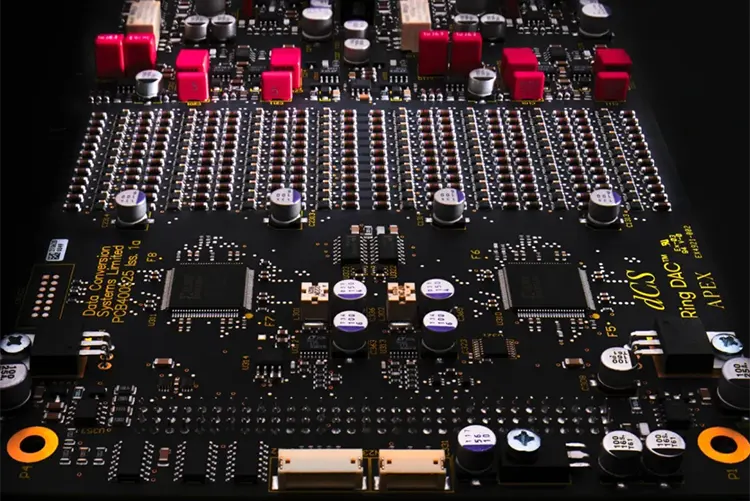
Reference Supply
The impedance of the Bartok APEX signal path for the reference supply feeding the current sources is now lower.
As the Ring DAC is a multiplying DAC (taking this reference voltage and multiplying it by however many current sources are turned on to create the desired output voltage), anything other than a perfectly stable DC voltage being fed to the current sources can result in unwanted effects on the output.
dCS has created a new reference voltage system that remains stable and more resilient to any unwanted artifacts, (EMI for example), on the reference supply caused by the current source latches switching states.
Clocking Signal Path
The Bartok APEX also has a lower impedance level for the signal path when feeding the clock signal to the Ring DAC latches and current sources.
That means the clock signal itself is more resilient to differences in the impedance of the current sources as the latches turn on and off. As the latches switch states, any unwanted impedance changes can cause a ripple effect back onto the clock signal itself, causing jitter.
What Has Not Changed?
The size, the weight, the shape, the control system, the LED screen, the physical buttons, the rear panel layout, and the list goes on. The Bartok APEX is not a new unit from the outside. It looks the same as the 2.0 version which also looks the same as the original Bartok from 2020.
That means a hefty 16.7 kg unit that feels heavily engineered with super thick aerospace-grade machined aluminum panels and acoustic damping as well as a minimalist front facia. It is a beast but an attractive centerpiece of a beast that feels like it is built to last.
All of the physical features are unchanged save for the rear panel plate and that swap is more about branding and serial number registering the new Bartok APEX over the older Bartok. It serves no other functional purpose as the layout and connectivity options are unchanged.
The BARTOK APEX physical appearance always reminds me of the Arcam ‘less is more’ facia engineering from the 1990s with that tasteful grey and 6 small buttons on the front center and the two headphone outputs and volume dial to the far right.
If you have owned something from their older DIVA range, for example, the CD72 or 92 CD players, you will understand what I mean. The Bartok APEX does not have a busy-looking aesthetic which is just fine for my tastes.
Click on page 2 below for my sound impressions and comparison to the dCS Lina Stack.
Click on page 3 below for my comparison with the dCS Lina system.

